Wooden You Like to Try These EscapeWelt Puzzles?
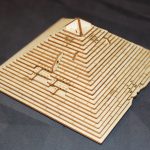
If you like escape room games and other activities that require a bit of creative thinking, here’s a new source of puzzles to try! EscapeWelt is a German escape room business that had to pivot because of the pandemic. They began to make wooden puzzles inspired by some of their escape rooms, with several steps to solve before you can open the box. EscapeWelt sent me a couple samples to try out with my family: Quest Pyramid, House of the Dragon, and the Quest Puzzle. Each of the puzzles is made with laser-cut and engraved birch wood, and assembled by hand.
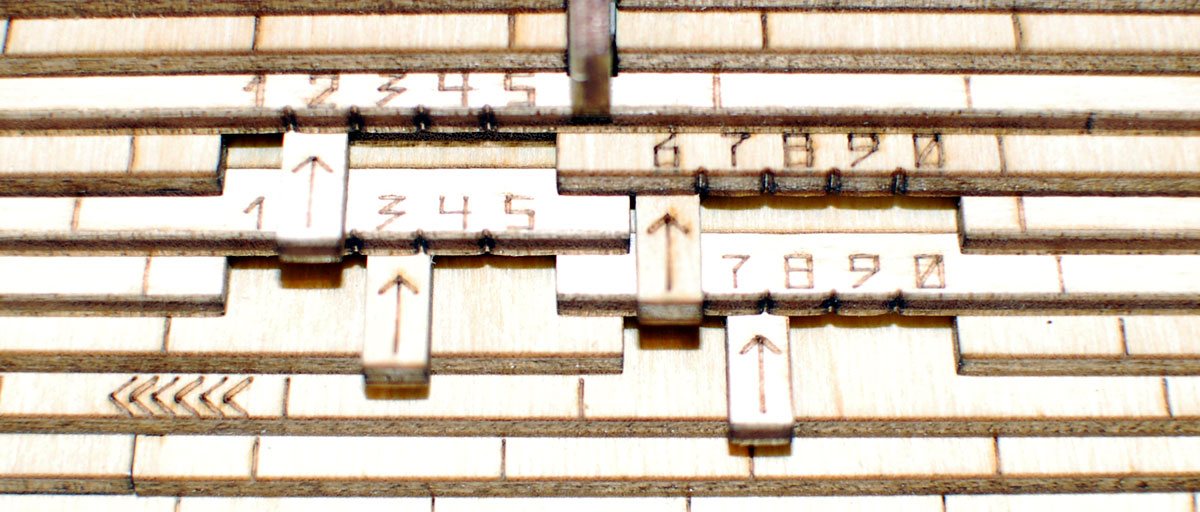
The first one we tried was Quest Pyramid ($58.90), an Egyptian-style pyramid made of stacked squares—though with a few surprises. There’s a little booklet with a story, but you know the drill: figure out a way into the pyramid to find the reward (and, hopefully, no curses). The booklet refers you to the base of the pyramid, where you find four cryptic clues, numbered from I to IV.
A few different things are visible right when you start: the four number sliders on the side seem like they’ll obviously unlock something, and one of the clues does have four parts to it—maybe they’re related? Another clue is a ring with various hieroglyphics in it … but what does that mean? And on one edge of the pyramid there’s a dial that reveals different symbols through windows in the base, but it’s also not immediately clear what that’s for.
If you get stuck, there’s a hint system online—you can see the hints listed by title (which may be a clue in itself); then click on it to get the hint, and if you need further help you can click to see the solution (along with a little video showing how it works). We did refer to the hints for this one, though partly because sometimes the parts can be a little fiddly and the internal latches can get caught if things aren’t positioned just right. We had the correct solution to one of the puzzles but weren’t precise enough with our placement.
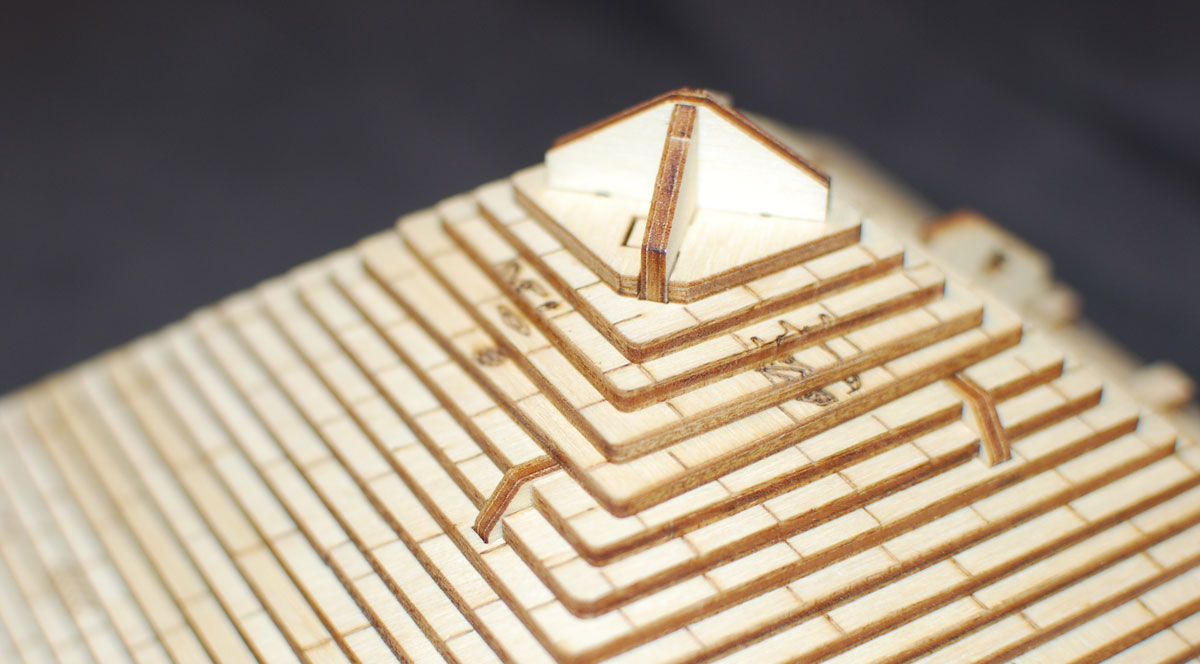
Once you solve all the puzzles, the top of the pyramid comes off, revealing a small compartment with a simple surprise inside. Of course, this could also make a fun gift box: you could open it up, put your own (small) item inside, and then reset the box for the recipient to solve.

Next we attempted the House of the Dragon ($57.70), a little pagoda-like structure with various details. At the front there’s a set of double doors, and clearly that’s what you’re trying to open. The booklet included with this one has a story about a father trying to reunite with his family … but then there aren’t any clues about where to start.
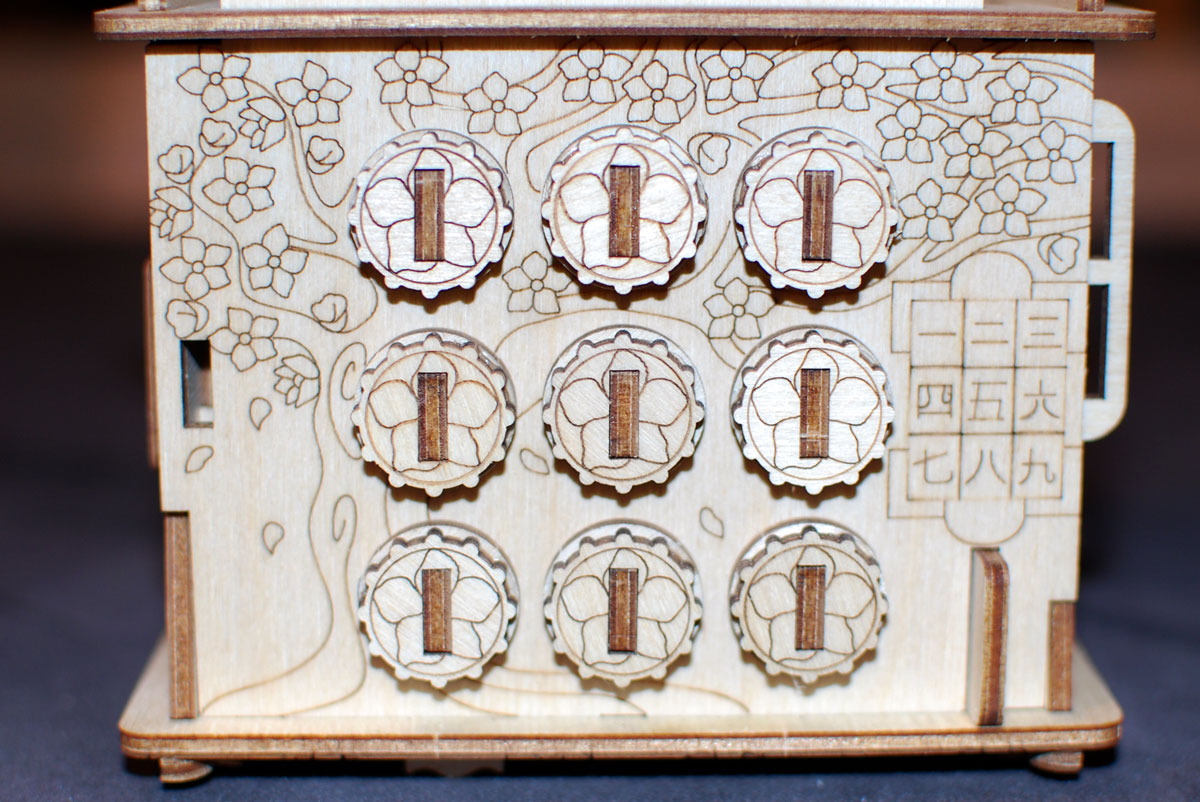
We spent some time poking around at this one to see how far we could get without using a hint. One face has nine seemingly identical knobs arranged in a square. We tried turning and pulling and pushing these—some extended slightly but otherwise didn’t seem to change anything. The base of the structure had a list of strange words.

Another side has a dial that turns, revealing various things through two small windows … but, again, we weren’t sure what to do with those, either. Ah, turns out we needed a bit of a hint.
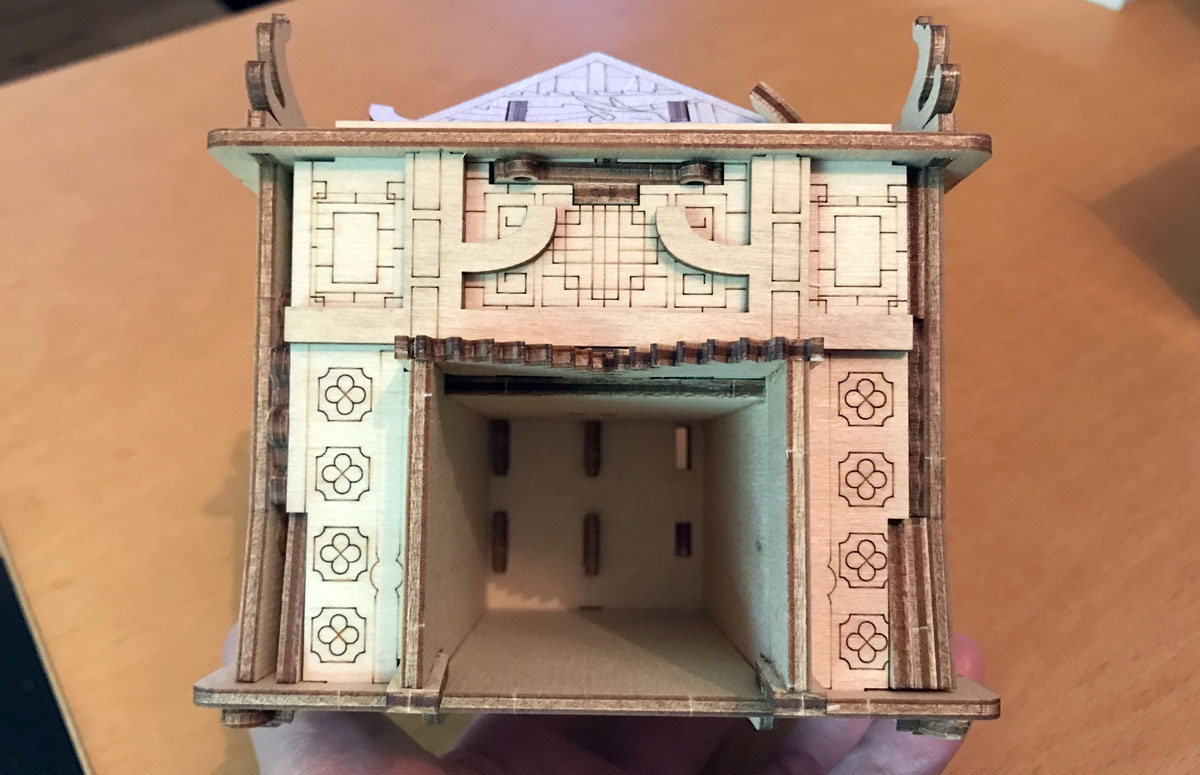
We did in fact get the House of the Dragon open (I’ve removed the surprise inside), and it’s a cool effect when the doors open; the puzzles were a bit trickier in this one than in the pyramid. One of the interesting challenges is that it’s not always immediately apparent which parts of the structure are actually movable and part of a puzzle, and which parts are simply part of the structure that holds everything in place. That makes for some clever hidden bits, but I won’t give away much more than that.

The last product we got to try was the Quest Puzzle ($32.00), which is a jigsaw puzzle rather than a puzzle box. It’s about 8 inches square, with 44 squiggly pieces, and is designed to drive you up the wall. There’s no image on the puzzle, so you have to work on it entirely by shape—though we did see that the woodgrain can at least tell you whether you have a piece oriented correctly.

Fortunately, the back of the piece is darker, so at least you can tell easily whether a piece is flipped over. But then you’re on your own, just trying pieces together and wondering how to fill in the square frame. There’s a small booklet that shows a diagram of the completed puzzle, and I did end up referring to it several times just so I could get it completed to put away before dinner. I may give this one another shot, but it’s quite difficult to do without any hints. I do like jigsaw puzzles and even ones that are pretty difficult, but this may be beyond my skill set!
Overall, my family and I really enjoyed the puzzles—especially the puzzle boxes—and they each provided about an hour’s worth of clue-solving and fiddling around. I like the physical, self-contained nature of these, along with the way that each one can hide a secret inside, and I also appreciate that you can reassemble them for somebody else to solve. The little stories included with the puzzles didn’t impress me as much (and it’s hard to say whether something was lost in translation from German), but I’m not sure that the puzzle boxes need as much of a story as a traditional escape room.
Speaking of escape rooms, if you’re in Leipzig, Germany, you could visit EscapeWelt and try out one of their actual escape rooms, too! Alas, for now I’ll have to be satisfied with these puzzle boxes instead.
For more information or to order yourself some puzzles, visit the EscapeWelt website!
Click through to read all of "Wooden You Like to Try These EscapeWelt Puzzles?" at GeekDad.If you value content from GeekDad, please support us via Patreon or use this link to shop at Amazon. Thanks!
